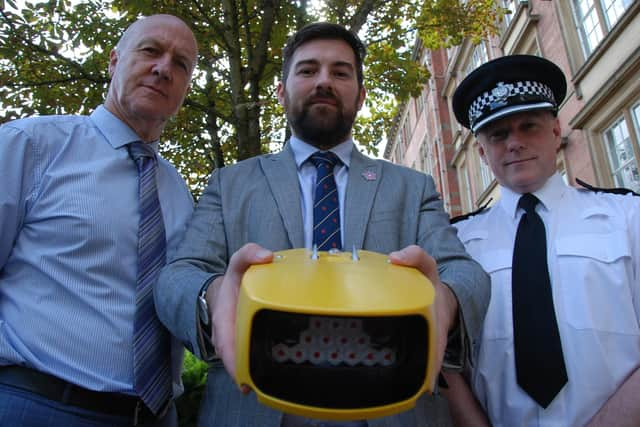Speed cameras to be installed on three dangerous roads in Lancaster
and live on Freeview channel 276
The Safer Road Fund programme is a £7.9m investment to reduce casualties on routes identified by the Department for Transport as the county's historically most dangerous A-roads.
A range of work has already taken place over recent years to improve safety on the five routes by upgrading them with features including LED cats eyes, high-reflectivity road markings and safety barriers.
Advertisement
Hide AdAdvertisement
Hide AdThe average speed cameras will be installed over the next year and become a key tool for the Lancashire Road Safety Partnership to reduce casualties on the county's roads.


Work began this week to install the cameras on the A581 from Rufford to Euxton, to be followed by the A588 from Lancaster to Skippool in November.
Early next year the cameras will begin being installed on the A683 in Lancaster from junction 34 of the M6 to Kirkby Lonsdale, followed by the A6 in Lancaster between the city centre and junction 33 of the M6 towards the end of February.
Work will then begin in March to install the cameras on the A682 in the Ribble Valley from Gisburn to the boundary with North Yorkshire at Long Preston.
Advertisement
Hide AdAdvertisement
Hide AdSome traffic management will be needed for the safety of those working near the roadside while the cameras are being installed, and as work follows to connect them to the electricity supply, however this will be managed carefully to minimise disruption.
Average speed cameras work by reading the number plate of passing vehicles and calculating a driver's average speed over a known length of road within the same speed limit.
This results in drivers maintaining a steady average speed rather than just slowing down when they see a traditional fixed or spot speed camera, delivering safer and smoother traffic flows.
A period of testing will be needed after the cameras are installed before they can be made operational and begin being used by the police to enforce speed limits.
Advertisement
Hide AdAdvertisement
Hide AdThere are currently eight routes already covered by Jenoptik’s SPECS average speed camera enforcement systems in Lancashire, which were installed in 2017 and 2018.
Initial evaluation shows there has been a reduction in collisions of up to 86 per cent on these routes. Jenoptik have also been awarded the contract to install this next phase of average speed cameras.
County Coun Charlie Edwards, Lancashire County Council cabinet member for highways and transport, said: "The technological advance represented by average speed cameras mean we are now in a position to greatly improve safety over many miles of Lancashire's historically most dangerous roads.
"These are routes which rely on drivers exercising good judgement, being mainly rural in nature, and with features such as tight corners and junctions where the history of serious incidents over the years have generally been clustered.
Advertisement
Hide AdAdvertisement
Hide Ad"As has already been shown elsewhere, the average speed cameras should be a real game-changer in terms of reducing the number and severity of incidents, and ensuring everyone who uses these roads will be safer, and the communities who live alongside them can also begin to feel safer."